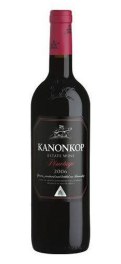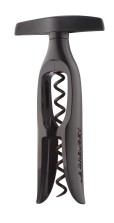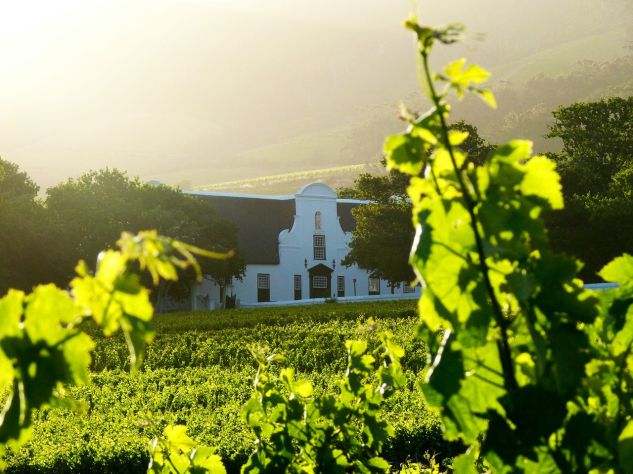You say Shiraz and I say Syrah. Here is another infographic in my wine 101 series.
Craigantlet Syrah 2013
 This wine isn’t available for purchase – only from one of the many cases in my garage. It is rather special in that my cousin’s husband made it, with investment from my father and uncles. It was a very small production so it was just distributed amongst the family to which we are very proud. I had it tasted by our professional panel at work that said that it has great potential but would benefit from some longer oaking.
This wine isn’t available for purchase – only from one of the many cases in my garage. It is rather special in that my cousin’s husband made it, with investment from my father and uncles. It was a very small production so it was just distributed amongst the family to which we are very proud. I had it tasted by our professional panel at work that said that it has great potential but would benefit from some longer oaking.
So I thought I would start off my week of Syrah with my tasting notes:
Nose: Immediate notes of spice with cherry following through. Medium-bodied wine with coffee flavours on the palate.
Pairing: I would pair this with a traditional roast lamb with roast veggies.
This is a very easy to drink wine and I would highly recommend it for red wine beginners (not a bad thing).
Come for glass…leave with a diamond
A friend of mine had this theory that you should never buy a book with gold writing on it, the reason being that it is merely a ploy to dress up mediocrity. I, however, like to apply the following by the late (great) Sir Terry Pratchett:
“Sometimes glass glitters more than diamonds because it has more to prove.”
― Terry Pratchett, The Truth
I design wine labels as part of my job and I find the whole label versus content conflict very interesting. I think a lot of tradiontalists still believe that good wines have old style, fancy labels and anything else is there to trick the customer into buying bad wine. Modern labels are becoming more common but they still are a bit reserved. 75% of all the labels I see at my wine shops and at work have the same back on white design and there is a hell of a lot of gold.
I say it is time to make more of design. How do you think Apple made all its money? You need to stand out. I believe in glass. It is there for you on a daily basis. You can’t drink a bottle of Kanonkop 2013 Black Label Pinotage everyday with your spaghetti bolognaise – especially not at R1350 ($112) a bottle. One of the nicest wines that I have tried lately was the Quartet 2014 Sauvignon Blanc Semillon. It costs around R70 ($6) a bottle and yes, its label has silver on it.
One won’t be wrong when they say that just because the wine has a shiny and attractive label it doesn’t make it good. The opposite is just as true. I realised this in university. I was tasked with purchasing some wine for a party and I was instructed to buy Four Cousins, which is the wine equivalent of coke but I was a poor student. Instead I went for something with a more traditional label – the kind with a coat of arms with some fancy serif type. Needless to say I never made that same mistake again, but it also didn’t mean that I still only drink Four Cousins (which does have its place in the world with its 1,5l bottles).
Here is the only thing you can do: Buy a good wine guide. South Africa has Platter’s (some feel that it is not entirely objective) and there isn’t one pretty picture in it. For fun, go out and buy a bottle from a label you know and one you don’t – choose it purely for it’s label (or out your book) and do a blind tasting. We do this at work and it is by far the most you can have with a bottle of wine and a brown paper bag. Make sure to take some notes.
So I think that we are being too hard on wines that set out to prove their worth in a very saturated market through label art. There is a lot of great wine out there with shiny and quirky labels screaming to be heard. If you want to buy a bottle of wine with a sparkly rainbow and a dancing unicorn then go for it. There is no judgement here.
Quartet Sauvignon Blanc /Semillon 2013
Tasting notes: Delicious combination of mandarin, passion fruit, green pepper, thyme and clove. Creamy texture adds depth to the fresh flavours framed by the suggestion of toasty oak.
Food pairing: Pair it with fish, shellfish and creamy pasta dishes.
 Kanonkop Black Label Pinotage
Kanonkop Black Label Pinotage
Tasting notes: A very complex wine with hints of red fruit flavours which reflects some Pinot Noir style elegance and structure.
Food pairing: Red meat or spicy Asian style dishes.
Another bargain!
On the subject of corkscrews…
How to choose a corkscrew
- they tend to break the cork
- I can’t get a good grip on the bottle and I feel it is going to slip out from underneath.
They most often double as a beer opener so they do have their bonus or they come with a good foil cutter. Make sure you get a good one though and that all the parts move easily.
This weeks wine bargain
I went to my first auction this week – there was one in a building across from my work. It was a blast. I highly recommend that everyone does it at least once.
I made off with this beautiful wooden wine rack for R200 ($17). An absolute bargain for starting my tiny wine collection. 😊

Happy Thursday everyone

South Africa has the best chardonnay – because the world says so
 Groot Constantia have just won the award for the best Chardonnay at the 22nd annual Chardonnay du Monde competition in France. It beat out 800 competitors (that made the final) to take this illustrious title. It has numerous awards already and the last 10 vintages have won 16 gold medals.
Groot Constantia have just won the award for the best Chardonnay at the 22nd annual Chardonnay du Monde competition in France. It beat out 800 competitors (that made the final) to take this illustrious title. It has numerous awards already and the last 10 vintages have won 16 gold medals.
The farm is stood strong during the recent wild fires that burned through vineyards and houses in the Constantia area. Jean Naude, CEO of Groot Constantia, said “it was quite a nice bit of news after the fire, you know it was a cloud not with a silver lining…but a cloud with a gold lining!”
Simon van der Stel – the Cape’s second governor – established Groot Constantia in the 1600s so its extensive history is why I got so angry in this post (which is in part why I started my blog). This year will be its 330th anniversary.
I find the wine to be very unassuming, as Jean Naude says: “Our Chardonnay has always been an over achiever”. It sells for a meager R1044 ($87) a case or R180 ($15) per bottle – this is exceptional value for money considering some of the best wines in the country can be over a thousand per bottle (Americans, I would love you to comment on this).
I have however come across some criticism over this award. Two of the buyers at my company have labelled this, and I quote, “bullshit”. According to them they believe the accolade is undeserved as Groot Constantia only grow around 40% of their chardonnay grapes. The rest are bought in. The best area for chardonnay is along the coast – more specifically around Hermanus because of the cold sea breezes – something that Groot Constantia lacks.
You will have to judge for yourself. And regardless of that South Africa needs some good news, especially since we lost so dismally to New Zealand in the cricket.
Groot Constantia 2013 Chardonnay
The Chardonnay has a pale straw colour with green tinge. One the nose the wine shows classic Chardonnay aromas: Chalk and lime, hints of ripe summer fruit and butter with subtle use of oak.
The wine is generous on the palate. It has rich flavours showing more creaminess and oak on the palate, while the lively acidity keeps the palate fresh and clean.
Serving suggestion: Cape salmon with lemon and caper butter or veal Cordon Bleu.
Women know your limits
This is the only thing that keeps coming to mind after my last tasting experience is a skit from Harry Enfield and Chums – a satirical sketch show laughing at old PSAs and adverts and my favourites inevitably end with “Drink gin!”
“…Need a loan? You’re never alone with gin”, has become something of a life mantra.
Now before we proceed you need to watch these clips and if you are seething and smoking at the end then I suggest you move on to another blog post.
So this is what I thought when I walked into my first whisky tasting. Know your limits. I know mine. I can’t drink the stuff and I am okay with it, but that doesn’t mean there isn’t room to learn. One of the boys I work with (we shall call him Greg) always jumps at the chance to let me join. There is a lot of enthusiasm for what we do here.
Our salesman for the day was, of course, passionate about his product. Truly zealous. I enjoyed his approach, which was not about the fine details, but just about how good the product is and how you need to enjoy it in order to sell it. We tested a whisky, a brandy and a liqueur from Distell – South Africa’s biggest producer. The Bain’s Cape Mountain Whisky is one of the best in the world, winning the World Whisky Award in 2013 for the Best Grain Whisky. Richelieu 10 Year Old Brandy comes with the same prestige.
It is good stuff.
I sniffed my way through it though, borrowing Greg’s glass in an attempt to try smell something. I find brandy and whisky to be like vanilla essence: smells divine, tastes awful, but makes delicious desserts.
Then came the last product: Klipdrift Black Gold liqueur. A 21 year-old potstill brandy infused with coffee and chocolate. So, like a girl, I automatically thought that this was something I could get behind – chocolate is girls’ territory.
I had one tiny sip. My throat burned like a veld fire before following through to a lovely coffee and chocolate flavour. However this did not make up for the fact that the burn sat in my chest for the rest of the day and no amount of water could take it away. More than ever I came out of that tasting with the belief that brandy is for the boys and wine is for women.
Last year I met someone who has a whisky evening where everyone brings a bottle for a tasting. I was surprised when I found out that one of those boys was actually a girl. What the hell was a girl doing there?
I do feel somewhat ashamed of this, especially since a lot of the tasters in that tasting room were female and they were taking it all just like the boys. It still feels wrong. It’s just the same as the assumption about boys and beer. In Japan everyone drinks beer and beer commercials are often marketed towards women – something I haven’t seen in South Africa. SA beers sell themselves to only the manliest of men: the ones that can build an airplane in a day whilst his abs glistens with sweat. It was the same during the beer tasting; that I felt like I didn’t quite belong even though I like beer (I just don’t buy it). I’ll Oktoberfest it up with the best of them.
So I am trying to figure out how to deal with all of this. Every alcohol comes with some sort of unpleasant assumption. Wine drinkers are snobs, sherry is for old women with cats and cocktails are for ladies only. Why can’t a boy have a drink that comes with a pink cocktail umbrella? I need to step out of my socially controlled comfort zone. I need to keep trying things even if I end up drinking a litre of coke to take away the heartburn. I need some adventure and hopefully along the way I will meet a Jamie or a Johnny that I really get along with.
Women: push the limits. Boys: order that cosmo.













